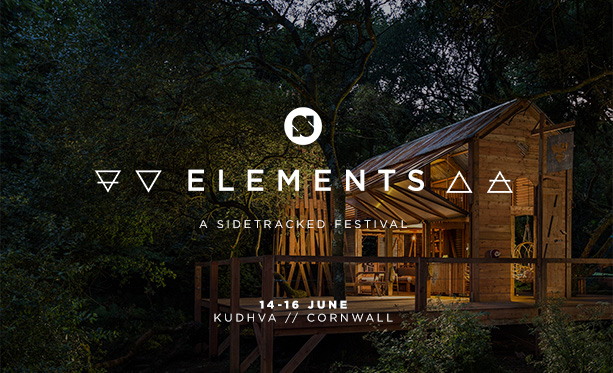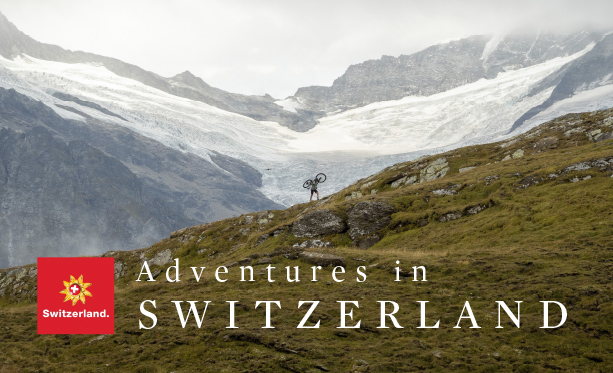Destination Guide: Winter in Bernese Oberland
Inspiration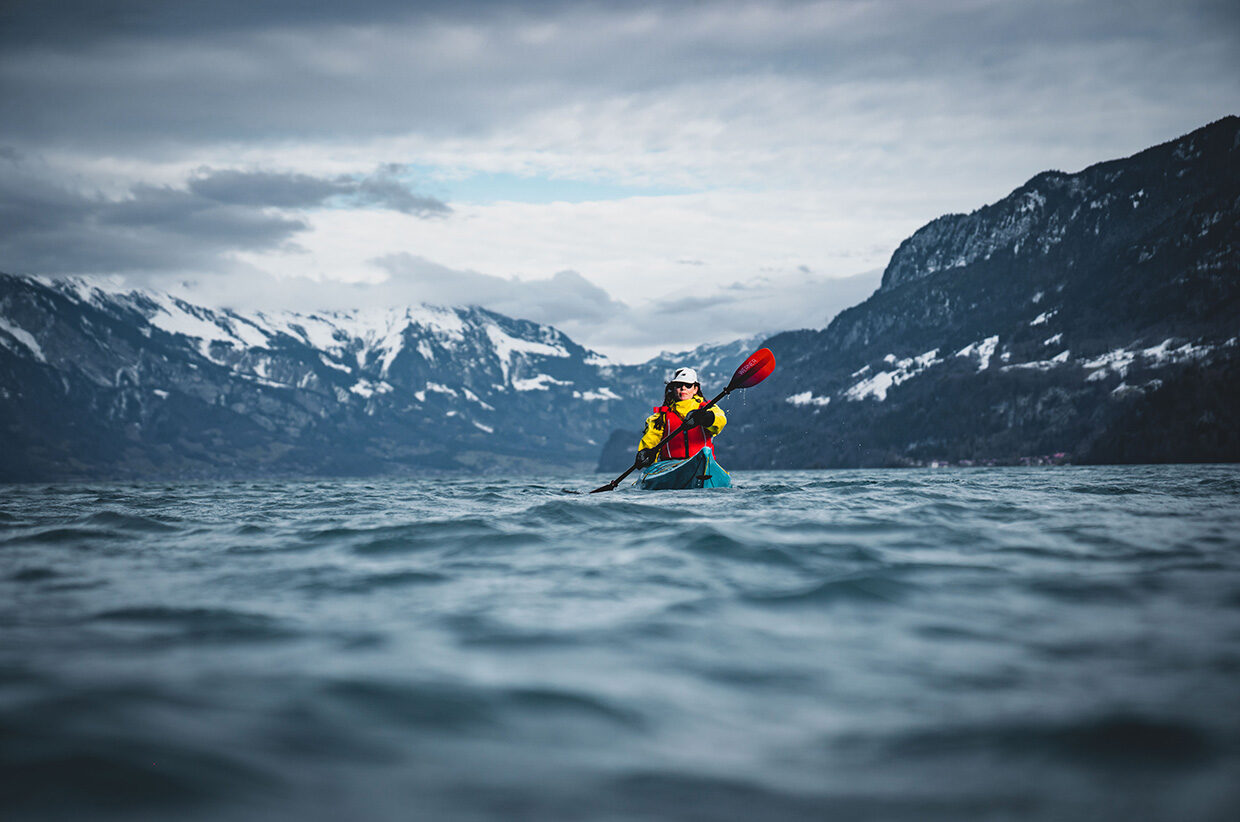
A Winter Guide to the Jungfrau Region and Interlaken
Written by Megan Brownrigg // Photography by Aaron Rolph
Produced in partnership with Switzerland Tourism
Peaks, lakes, and trails criss-cross at scale in the Bernese Oberland. The landmarks sketch a complex treasure map across this region of central Switzerland, also known as the Bernese Alps or Bernese Highlands. And these gems are enjoyed by skiers, hikers, and snowshoers alike.
Treasure is easy to share in a land freckled by 800 lakes and guarded by the formidable Eiger, Mönch and Jungfrau peaks. Two jewels in particular stud the Bernese Oberland’s crown: Interlaken and the Jungfrau Region. Interlaken is known for its skies as well as its waters. It’s a place where winter paragliders can wave to kayakers below. The Jungfrau Region, meanwhile, appeals to the extremes. It boasts one of the region’s most dominating peaks, Europe’s highest railway station, and the world’s longest downhill ski course. Whether you’re chasing winter for its soft slowness or its fortifying severity, Bernese Oberland is the place to spend this season.
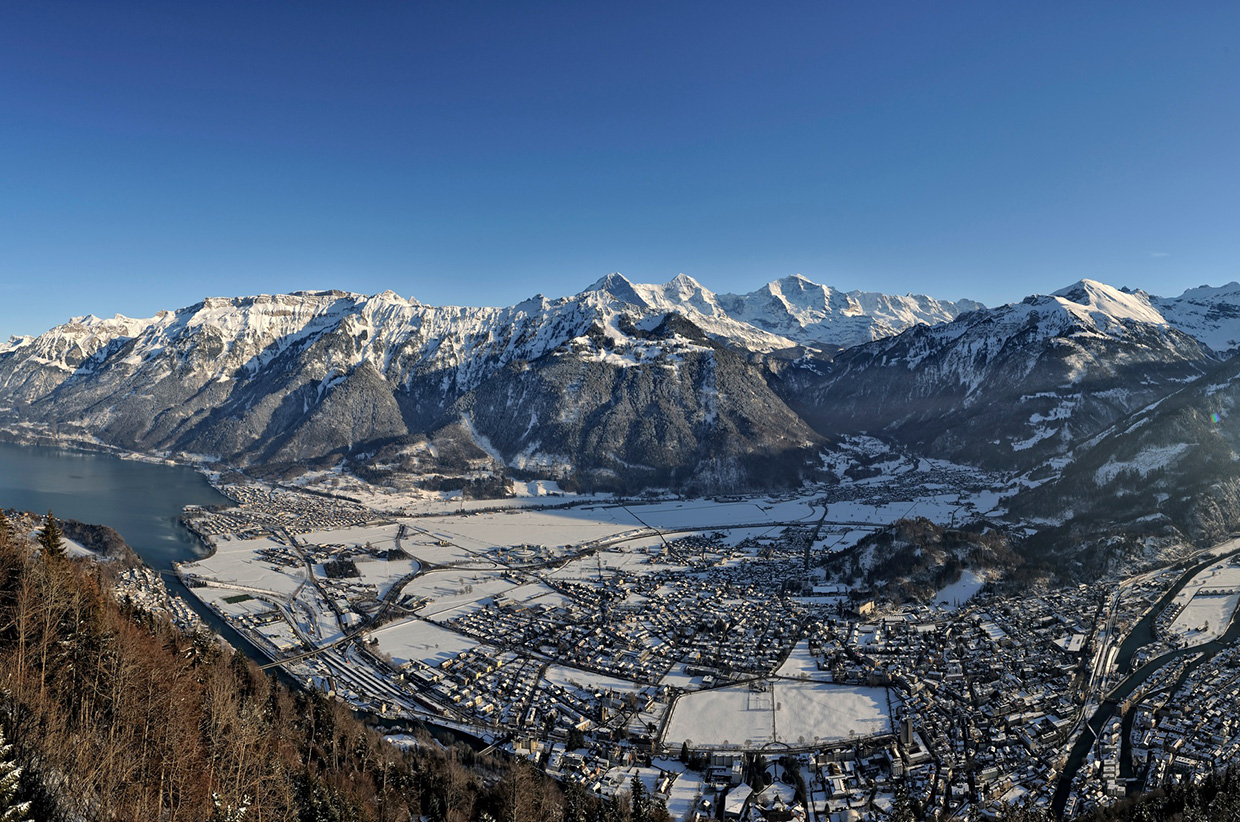
INTERLAKEN
Laid like a magic carpet in a clearing of the Bernese Highlands, this town ‘between lakes’ sits on an alluvial plain at the base of the Harder Kulm mountain. Interlaken’s Alpine waters belong to Lake Brienz and Lake Thun, glittering in an unnamed grade of teal. They make great opening credits from a train carriage window, not least because Interlaken has been home to the historic Bernese Oberland Railway since 1890. Ever since, thanks to its gorges, glaciers, and lagoons, it’s been evolving as the Adventure Capital of Europe.
HIGHLIGHTS
Winter kayaking
Can you name something more exhilarating than melding breath with mist on a wintry lake, and pretending you’re on Mercury? This ethereal experience can be earnt by slipping on a dry suit, donning a hat, and hiring a kayak. After a short paddle, sit under the sky and see if it drops sun rays or snow flakes. As long as you have a thermos of hot tea, you won’t mind which.
Paragliding
Snatching winter quiet is perhaps easiest in the sky, amongst Interlaken’s winter migration of paragliders. A ride will have you gliding through crisp air in an amphitheatre of mountains, looking down towards Lake Thun. Afterwards, you can tell your friends that you went flying for the day and landed on snow. They’ll hate you. And if you’re seeking something more extreme then an adrenaline-filled alternative to this is skydiving out of a helicopter – also an option in Interlaken!
Hot Tug
If you’ve never pictured yourself steering a jacuzzi across a lake, it’s time. The Hot Tug spa, with its electric engine and wood-fired heating system, is calling from Lake Brienz – and it says you’re captain.
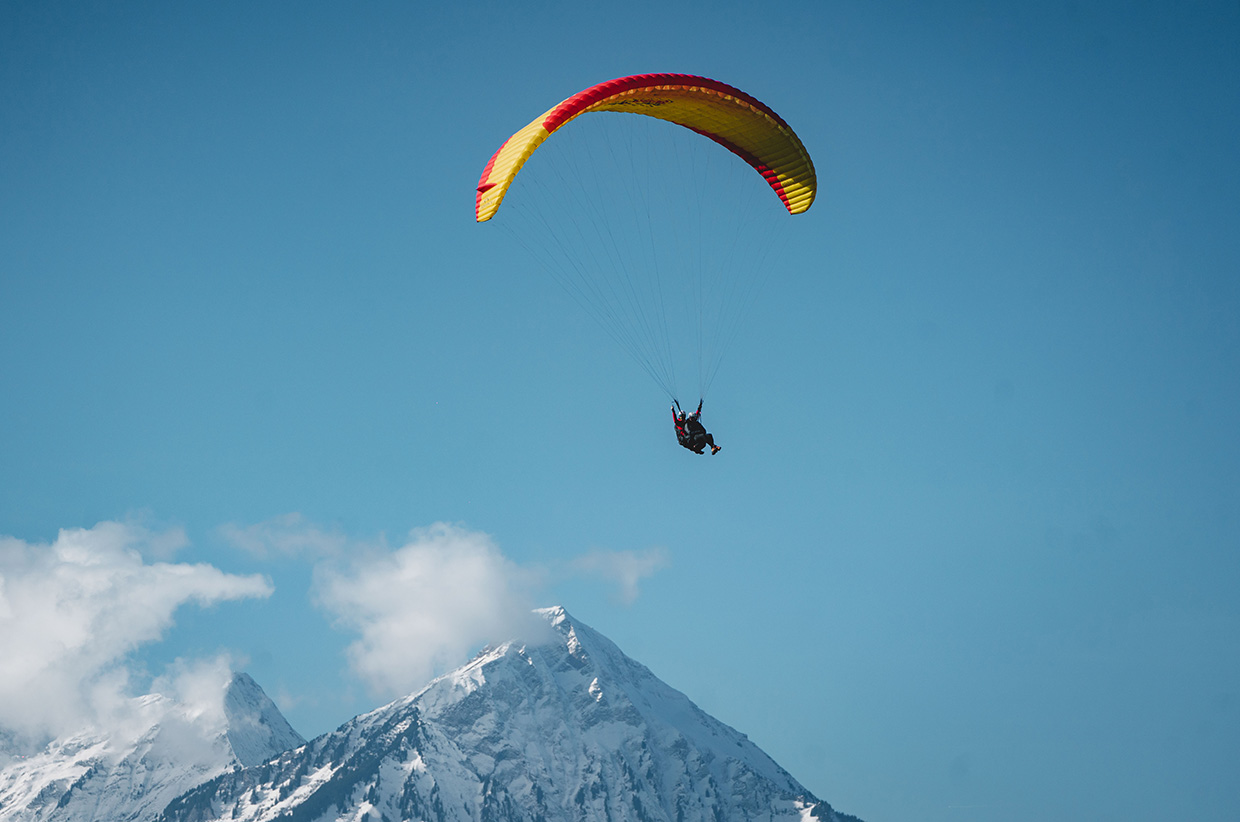
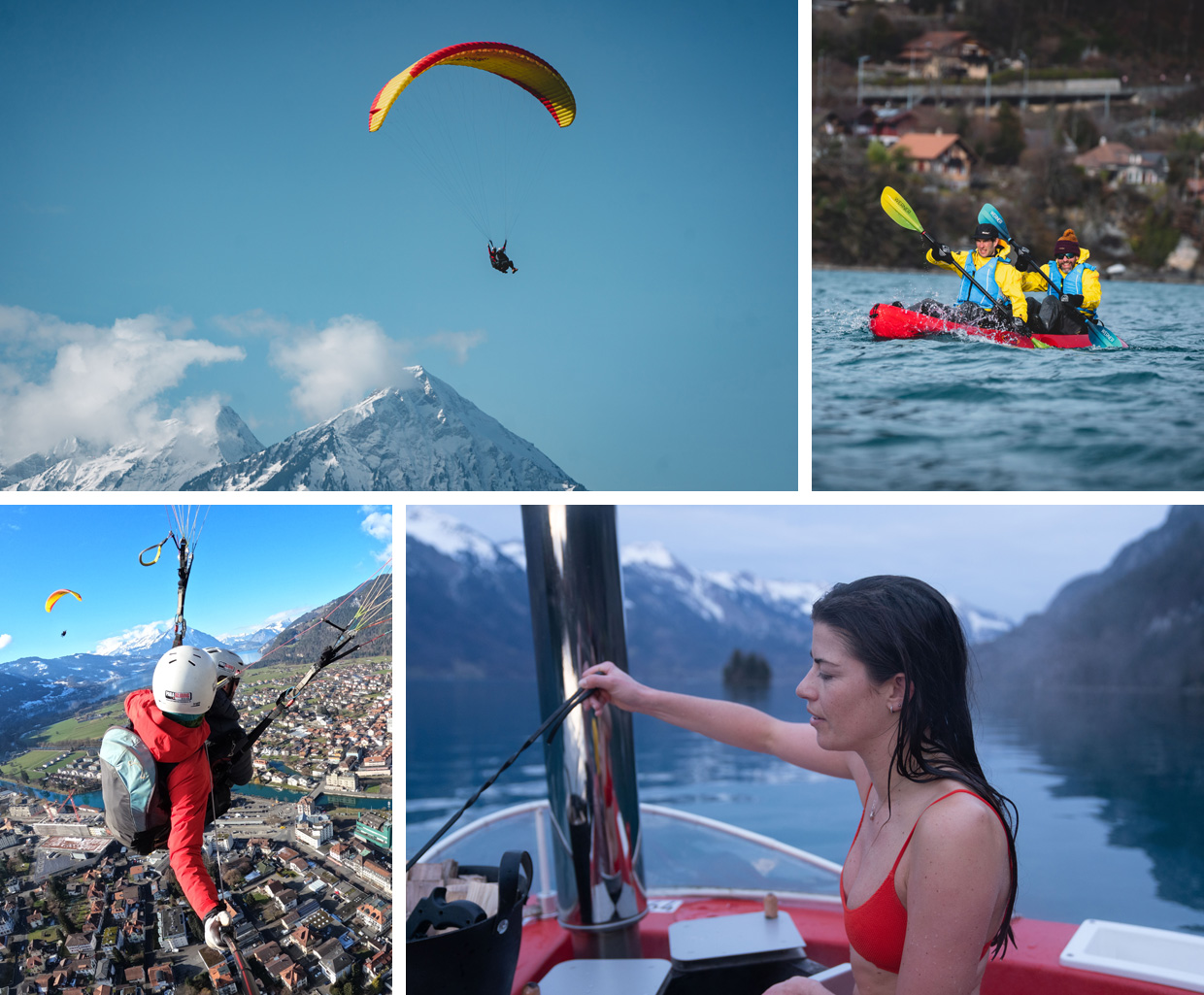
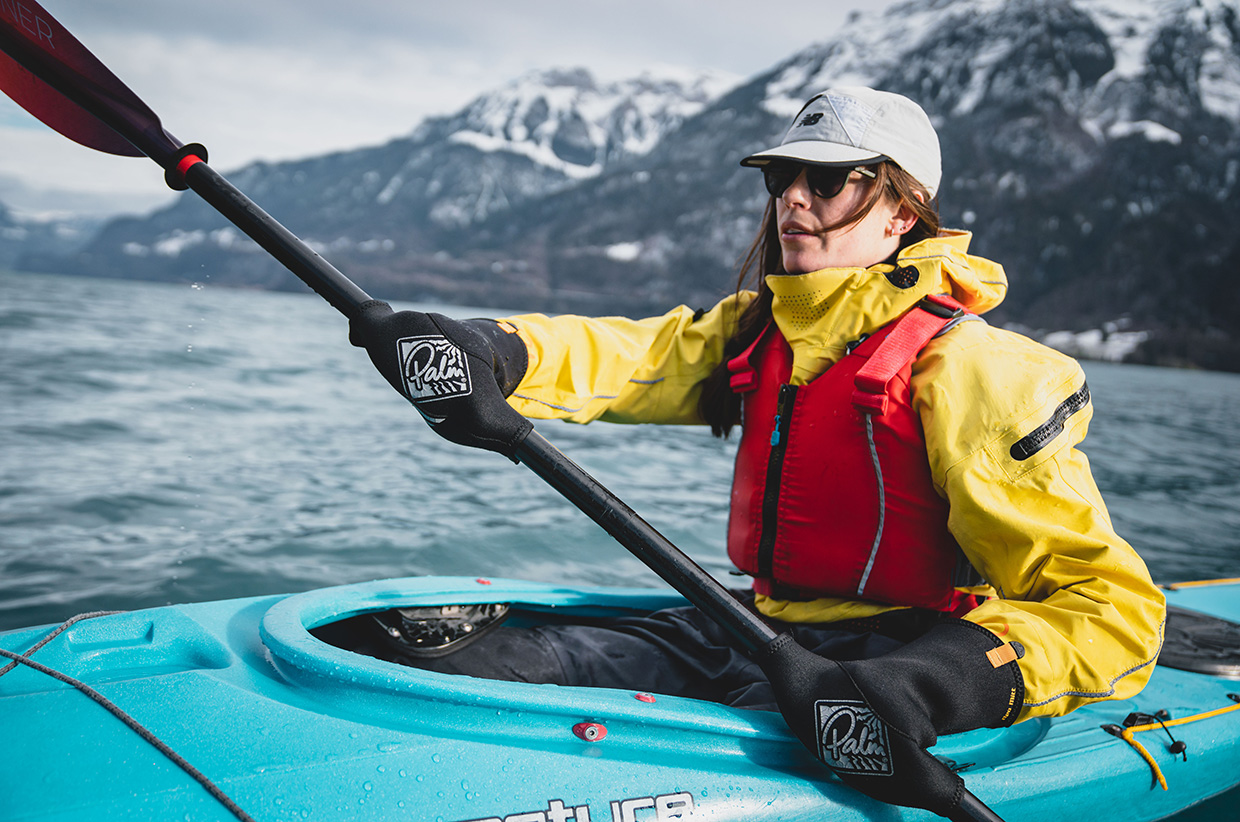
WHERE TO STAY
The hey Hotel
This laid-back spot offers a refreshing sidestep from tradition with its modern rooms and communal, almost Scandinavian vibe – a great shout for solo or young travellers. The Lisi bar lends itself to socialising with home-made lemonade, fine wine, craft beer, and that long (awaited) coffee. The food menu prides itself on being vegetarian friendly too.
Victoria Jungfrau Grand Hotel and Spa
150 years of hotelier experience are writ large in this building, which looks out onto the Jungfrau massif. It isn’t un-fancy, and will require deep pockets, but the quirkily-themed suites and ridiculously big beds will make you feel spoiled. The fine dining restaurant run by executive chef Stefan Beer promises plates filled with ingredients grown within 50km. And if you’re wondering whether the spa includes a particular treatment, we’ll just tell you that the spa is 5,500m2 and probably does.
WHERE TO EAT
Grand Café Restaurant Schuh
Recognised as a benchmark of Swiss tradition and quality, this sweet spot sits next to Höhematte Park. By all means try Schuh’s full meals, but don’t miss their pastries. Schuh’s chocolate and confectionery have been hailed as some of the best in Europe since the 19th century… and the salted caramel pralines are otherworldly.
Restaurant Taverne
Winding back to the 14th century, this traditional Swiss eatery makes an effort to pull modern twists on its menu. The family-run spot offers small plates including burrata and carpaccio. Mains range from liver lasagne to Alpine salmon and mango and quinoa dumplings.
WHERE TO EXPLORE
Lake Brienz
A ferry across this lake will show you earth, water, and fire – the liquid fire that we mortals call waterfalls. On the surrounding shores, storybook Switzerland is preserved through the trade of woodcarving. This is best illustrated in Brienz’s woodcarving and violin-making school, as well as tallies of timber trinkets at the Christmas markets. While you’re walking through Brienz, try and spot what was once voted Europe’s most beautiful alley. And to savour the village’s long sloping quayside, book a hotpot. These steaming winter baths come served with molten fondue and icy panoramas. Between snowy glades and meadows, you’ll be able to spot other villages including Axalp, Schwanden, Hofstetten, Oberried, and Brienzwiler.
Lake Thun
Flanked by the River Aare, Thun is often spoken upon as the gateway to the Bernese Oberland. Created after the last glacial period, Lake Thun split from Lake Brienz in the 10th century – the two lakes had previously existed as one, called Wendelsee (Lake Wendel). In Thun itself, you can creep back in time and discover the five castles around Lake Thun, or see the first panorama painting of Switzerland in Old Town. The Thun Panorama is the world’s oldest surviving example of this type of art, and was sketched by artist Marquard Wocher atop Thun’s roofs in 1814.
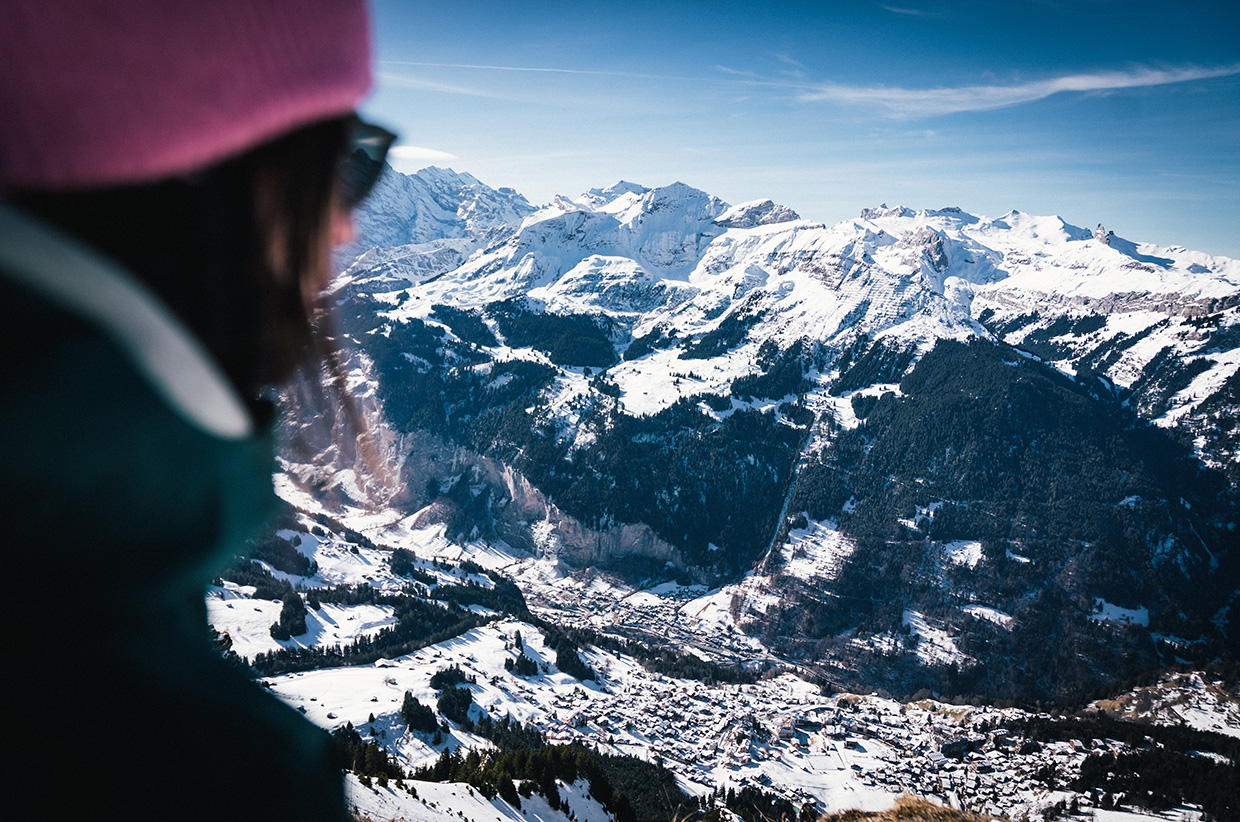
JUNGFRAU REGION
Dominated by the Jungfrau massif, and the Jungfraujoch railway station sitting pretty at 3,463m above sea level, this area lends itself to superlatives – and never more so than in winter when the snow crunches and skiers can fly down its sides at speed. The Eiger, Mönch, and Schilthorn peaks also call this postcode home. But the Jungfrau Region isn’t all about highest points, nor is it designed to be seen solely in a blur. There are plenty of ways to slip slowly through Lauterbrunnen and Lütschental, its two valleys. On your way, you’ll find small towns burrowed into their contours and cliffs with names like magnets – Mürren, Wengen, and Grindelwald to name just three.
HIGHLIGHTS
Snowshoeing
Mastering your mountain stride in near-silence is a must-try meditation, and Jungfrau boasts 200km of trails to mindfully tread. If you want some snowshoe tips, one of the Jungfrau Region’s trained guides can help you hone your technique with gliding or climbing, but this is also a sport you can try without any experience. For beginners, we’d recommend heading to Grindelwald’s Upper Glacier car park where you can shuffle onto the Wetterhorn Trail. This route will wind you through icy forests and moorlands, nudging you under the shadows of the Eiger and Wetterhorn. Not bad for 4km. If you’re in Wengen, on the other hand, you can watch the Lauterbrunnen Valley unfurl in its full length from the Leiterhorn Trail.
Ski Touring
The Jungfrau Region’s ski resorts of Grindelwald, Wengen, and Mürren are world-renowned. Throughout 350km of trails, huge drops – including the world-famous downhill course at Lauberhorn – marry with slopes for all styles and abilities. But we recommend the lesser-known paths. Ski touring puts you tête-à-tête with unmarked routes, ungroomed terrain, and the the Jungfrau Region’s wild backcountry. Beginning from the Jungfraujoch, one sporty route will have you circumnavigating glacier crevasses and skinning uphill, but there’s no more honest way to meet this mountain. If you’re seeking a long descent without too much hassle, we suggest the Höji Sulegg route, starting from the mountain hamlet of Sulwald and travelling through the Lauterbrunnen Valley. The narrow section through Guferwald is a particularly thrilling section.
Trail Running
Sometimes nothing beats chucking on shoes and getting out the door. The soles of trail runners kiss the Jungfrau Region throughout the depths of winter thanks to its snow fields, crystalised forests, and frozen lakes. There are over 100km of running trails here – and a good 21km section to knock off in one go is the Faulhorn W5. Beginning at 1,688m in Grindelwald, the route winds to Rasthysi and on through Nodhalten before offering a midway pitstop at the Waldspitz guesthouse. Here, soak up some winter sun – and views of the Eiger – before sledding down to Lake Bachalpsee to the next section of the trail. A hardcore vertical up to the Faulhorn is rewarded by some easy k’s down the longest sled run in Europe.
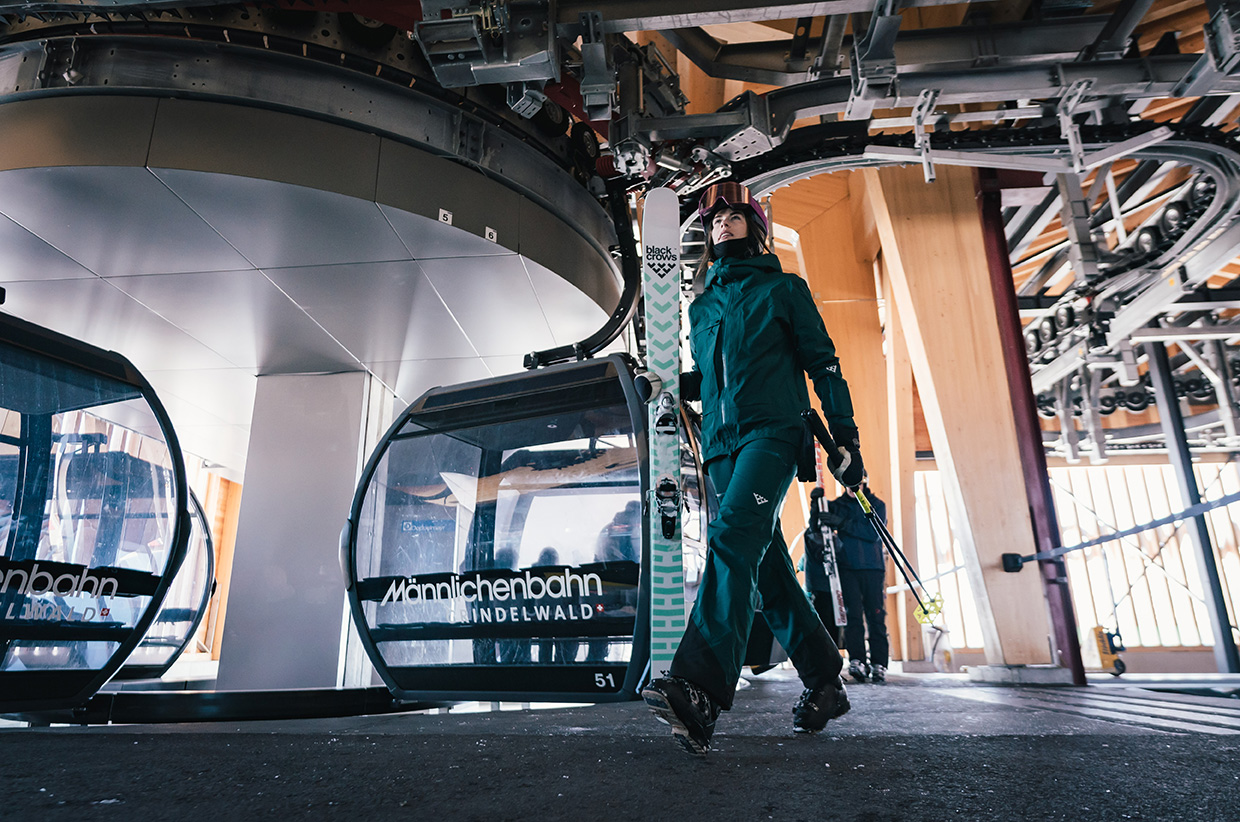
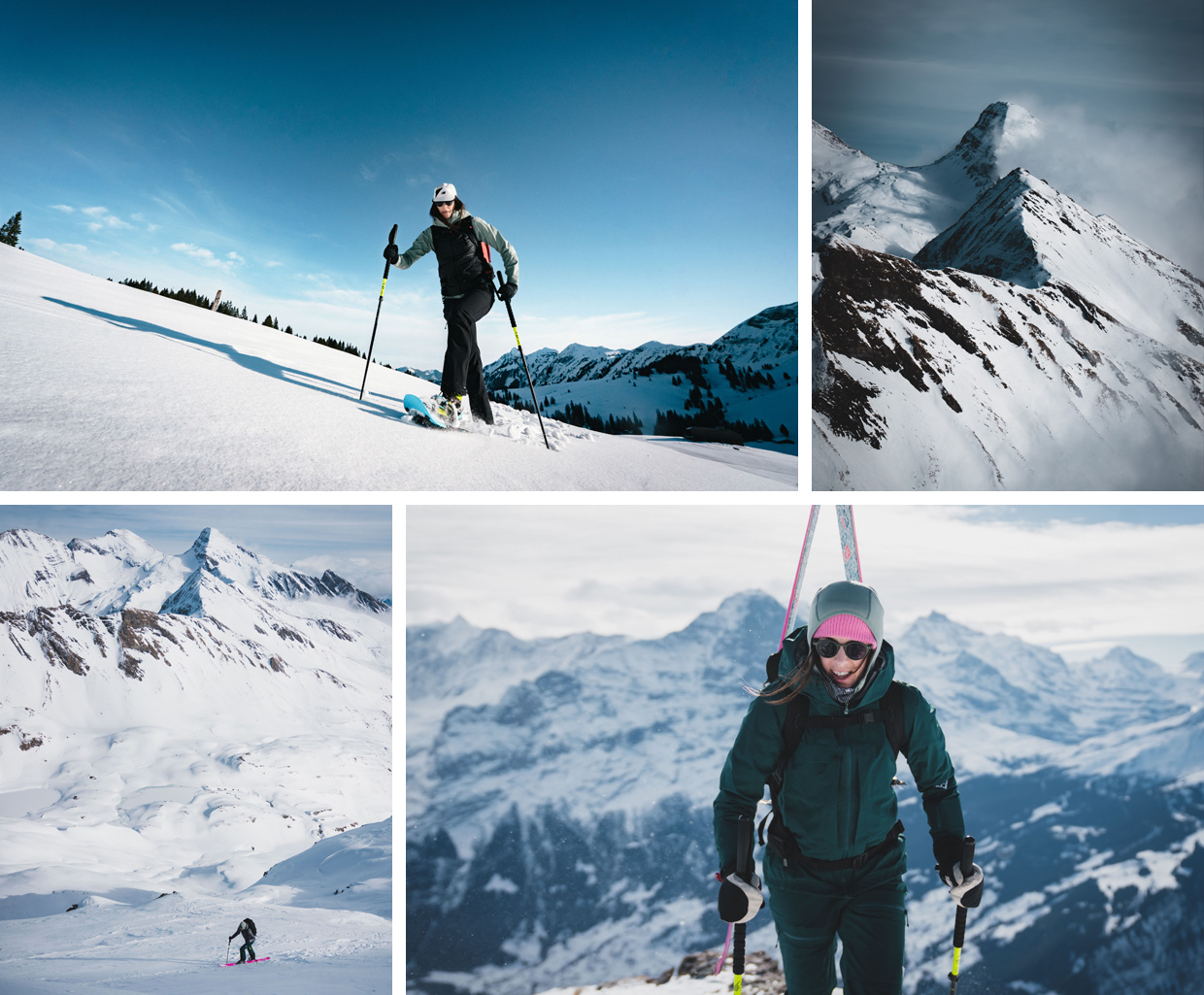
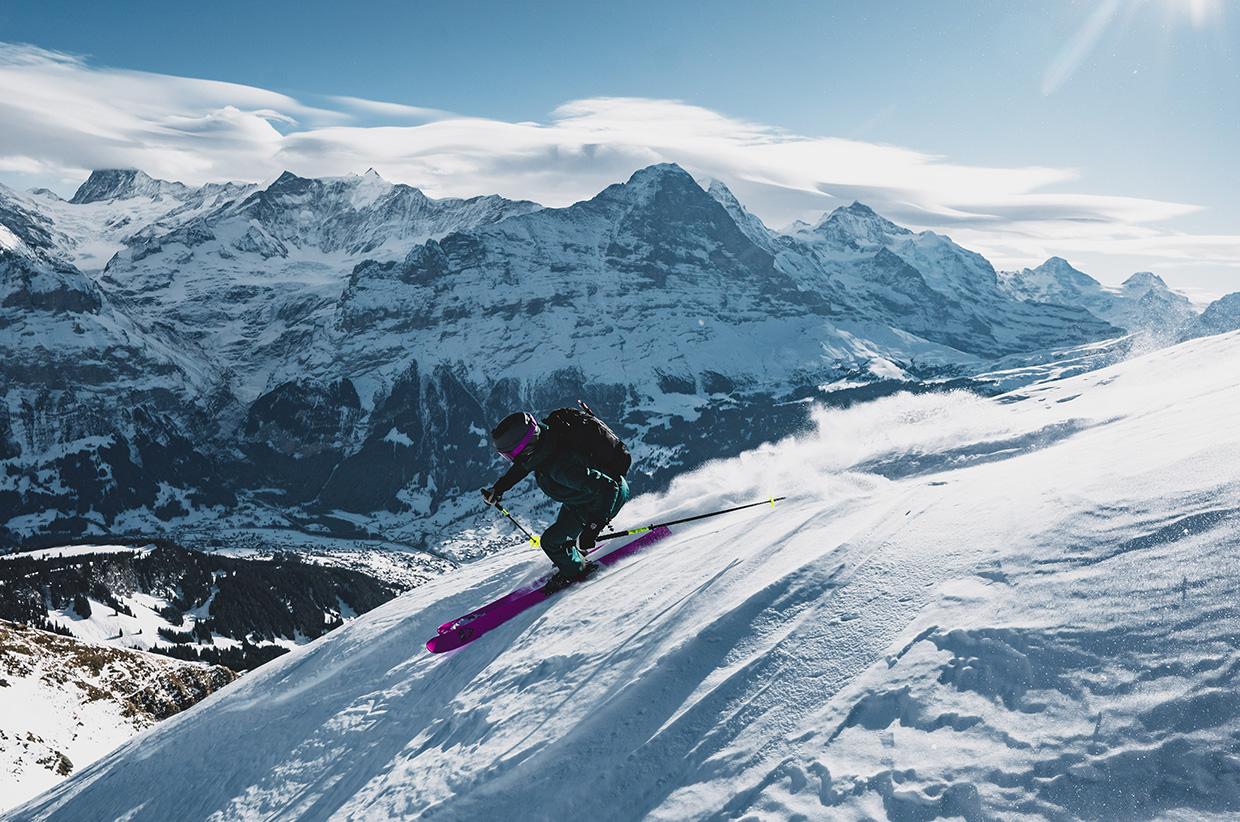
WHERE TO STAY
Beausite Park Hotel and Spa
Situated in the car-free village of Wengen, a short walk from the cable car station, at Beausite you can count on big plates of food, staggering views, and long sleeps. An obvious perk: the spa. This includes a natural outdoor swimming pond as well as its indoor heated twin. The staff are known for being a lovely lot, too.
Hotel Bodmi, Grindelwald
You can hike straight up to the Grindelwald First mountain station from Bodmi’s doorstep, but its friendly chef and his revered food truck might keep you rooted at ground level. Luckily new skiers need only travel sideways to the town’s nursery slopes – and, for those who’ve already exhausted themselves exploring and just want a lie-in, many of Bodmi’s balconies nod towards the Eiger massif.
WHERE TO EAT
Adlerstube-Sunstar
Regional Swiss specialities including fondue, rösti, and cordon bleu are to be found at the Sunstar Hotel in Grindelwald. Wooden walls, stained glass lamps, and thick blankets will medicate your long days in icy conditions. As will the wine list…
Sulwald Stübli
Narrow ribbon roads or cable car can be used to arrive at this spot in Lauterbrunnen. We sincerely advise leaving your car in Isenfluh and doing the latter! Enjoy the ride as this restaurant reveals views on stilts of Eiger, Mönch, and Jungfrau. As for the menu, expect hearty plates of Swiss savouries, cheeky afters of apricot cake, and accompaniments of live music.
WHERE TO EXPLORE
Wengen
Famous for hosting the Ski World Cup every January, Wengen has somehow resisted becoming hectic. The village can only be reached by cog railway from Lauterbrunnen, which secures its sense of escapism. Although time stands still here, the people don’t. They ski, skate, sled, and curl in Wengen’s back garden before enjoying its whimsical wintry evenings. The absence of cars accentuates fairy-lit mountain huts offering just about every winter warmer – edible and drinkable – you can imagine.
Kleine Scheidegg-Männlichen Trail
If you’re looking for a panorama trail suitable for families, this is your gig. Sweeping valley views are punctuated by the region’s headline peaks in this route tracing the eastern flank of Tschuggen. You’ll pass pine forests, glaciers, and cliffs, and have the whole thing cracked in 5km. If you want a downhill doddle rather than a climb, flip the route.
Written by Megan Brownrigg // @brownriggmegan
Photography by Aaron Rolph // @aaronrolph
Produced in partnership with Switzerland Tourism, Interlaken and the Jungfrau Region





